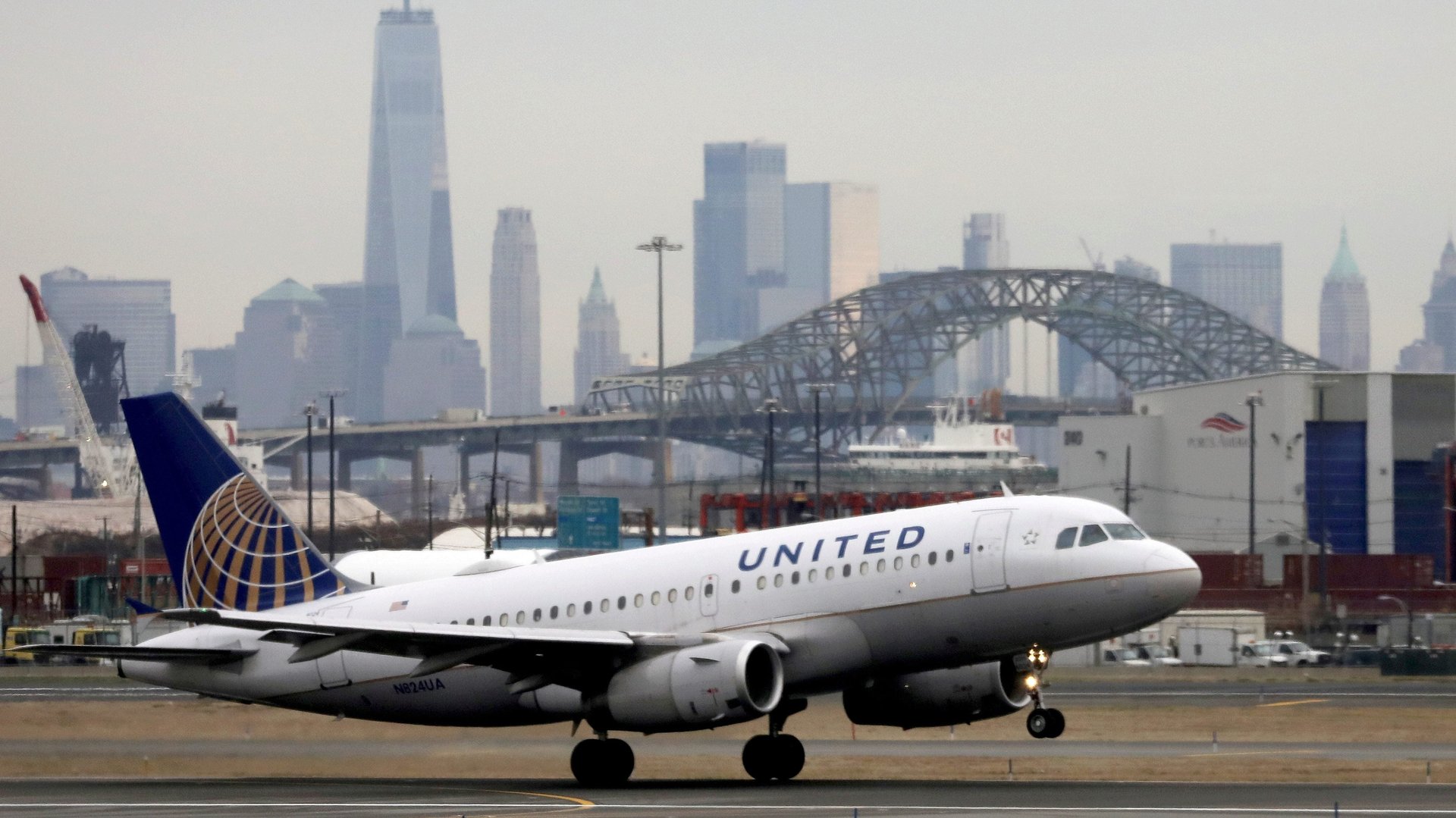US airlines are planning to unnecessarily burn 20,000 tons of CO2 per day because of FAA rules
A proposed rule change from the US Federal Aviation Administration (FAA) has prompted airlines to change their schedules and dramatically increase their carbon emissions by burning millions of gallons of jet fuel. It’s the result of airlines scheduling unneeded, extra flights out of the seven most congested US airports to protect their access to those airports into the future.


A proposed rule change from the US Federal Aviation Administration (FAA) has prompted airlines to change their schedules and dramatically increase their carbon emissions by burning millions of gallons of jet fuel. It’s the result of airlines scheduling unneeded, extra flights out of the seven most congested US airports to protect their access to those airports into the future.
The rule governs how airlines use their assigned takeoff and landing slots at the US’s most congested airports. Data from aviation analytics firm Cirium shows a bump in scheduled flights on Oct. 30—the day the rule change is set to take effect—even though consumer demand for air travel is falling amid a resurgence of Covid-19 outbreaks across the US.
US-based airlines have scheduled 13% more flights in and out of the seven airports covered by the rule: New York Kennedy, New York LaGuardia, Washington Reagan, Newark, Chicago O’Hare, Los Angeles, and San Francisco. The increase isn’t consistent across airports. Nearly all of the new flights are scheduled into and out of the country’s so-called Level 3 airports—Kennedy, LaGuardia, and Reagan—which are subject to the strictest FAA limits on takeoffs and landings. Flights through the country’s four Level 2 airports—O’Hare, Newark, Los Angeles, and San Francisco—are scheduled to remain relatively flat.
Using average fuel efficiency data for each scheduled aircraft type from the US Department of Transportation and schedule data from Cirium, we can estimate the amount of extra fuel that will be burned. Data from the US Energy Information Administration lets us convert fuel usage to carbon emissions. The result: 20,000 tons of extra CO2 per day.
Every week these extra flights are flown is the equivalent emissions of putting 30,000 more cars on the road for a year. It would take 29 wind turbines running for a year to offset the emissions of just one week of the extra flights according to the Environmental Protection Agency.
Why airlines must add flights to keep their slots
Normally, the FAA requires that airlines use at least 80% of their allotted departure and arrival slots at these seven airports, or else they risk losing them to rival carriers. Slots are a scarce and valuable commodity. The FAA limits the number of planes that pass through these airports each day, so securing an arrival or departure slot allows an airline to operate one of a limited number of lucrative flights through some of the largest US airports. Airlines, in other words, have a strong—and in this case perverse—business incentive to keep their slots.
The FAA has the most control over slots at the most congested airports. At Level 3 airports—which experience “regular and significant delays”—the FAA assigns a limited number of arrival and departure slots to airlines twice a year. At Level 2 airports—which experience manageable delays—airlines have much more power over the slot assignment process. Under the FAA’s oversight, they work out their own slot assignment deals among themselves to limit the total number of flights to a reasonable level.
On March 13, 2020, the FAA waived the 80% slot usage rule to avoid penalizing airlines for running fewer flights during the pandemic. It extended the waiver in April 2020, October 2020, and January 2021. But on Sept. 16, the FAA announced its intention to let the waiver expire for domestic flights on Oct. 30 (although it plans to extend the waiver for international flights through March 2022).
Demand for air travel hasn’t recovered, and may never
By letting the slot use waiver expire, the FAA is essentially declaring that air travel has reached a new normal. The original logic for suspending the 80% rule was that demand for air travel had fallen way below normal, pre-pandemic levels. It didn’t make sense to take away an airline’s slot allotments just because it wouldn’t run empty flights during a pandemic, so the FAA temporarily waived the rule while the industry waited for demand to recover.
Now, the FAA says it’s done waiting. Demand for air travel hasn’t returned to its pre-pandemic level, but it has reached a new baseline that airlines will have to deal with for the foreseeable future. After over a year of steady recovery, US air passenger traffic has remained generally flat since July. If an airline can’t use at least 80% of its takeoff and landing slots now, the FAA intends to reassign those slots to other airlines that will use them.
“It is becoming apparent that Covid-19 is causing structural and operational changes to the airline industry; the industry is adapting; and the issuance of waivers should not hinder that adaptation,” the FAA wrote in its rule change proposal (pdf). “At some point in time, repeated waivers to preserve pre-COVID slot holdings will impede the ability of airports and airlines to provide services that benefit the overall national economy and make appropriate use of scarce public assets.”
Airlines ramp up flights to keep their departure slots
On Sept. 19, the FAA issued a proposal to bring back the rule, but it’s in the middle of a public comment period that extends until Sept. 27. So a disruption of the slot-usage status quo isn’t yet guaranteed. Airlines, clearly, aren’t taking any chances. Here are how flight schedules are set to change at each slot-limited airport, by airline.
Carriers are moving more aggressively to ramp up flights at Level 3 airports.
But most airlines haven’t yet ramped up flights at Level 2 airports.